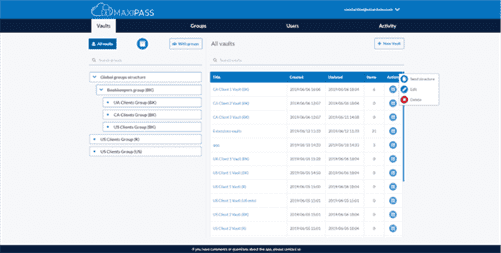Avoidance is a method for mitigating risk by not participating in activities that may negatively affect the organization. Not making an investment or starting a product line are examples of such activities as they avoid the risk of loss. Risk analysis involves establishing the probability that a risk event might occur and the potential outcome of each event.
Non-serious adverse events and unrelated serious adverse events will be reported in the annual progress report to the NIMH. Serious adverse events that could be related to the study should be reported to the NIMH Program Officer within 7 days of becoming aware of the event. Team meetings by the PI and his/her staff will be conducted on a routine basis to discuss protocol issues and review adverse events. A Data and Safety Monitoring Plan (DSMP) that addresses the potential risks of the study will be reviewed and approved by the NIMH Program Officer and the OCR. For all greater than minimal risk studies, sufficient surveillance and protections must be in place to adequately identify adverse events promptly.
Step 2: Factors for Estimating Likelihood
The tester is shown how to combine them to determine the overall severity for the risk. The OWASP approach presented here is based on these standard methodologies and is
customized for application security. Use the examples below to determine which risk classification is appropriate risk level definitions for a particular type of data. When mixed data falls into multiple risk categories, use the highest risk classification across all. As a general rule, networked systems that process regulated data (e.g. HIPAA, FERPA, FISMA, ITAR, PCI-DSS etc.) are considered high-risk systems.

Simplify how you manage risk and regulatory compliance with a unified GRC platform fueled by AI and all your data. The probability of harm occurring might be categorized as ‘certain’, ‘likely’, ‘possible’, ‘unlikely’ and ‘rare’. However it must be considered that very low probabilities may not be very reliable.
NIMH Guidance on Risk-Based Monitoring
Of the three matrix sizes, the 5×5 format allows EHS professionals to conduct risk assessments with the most detail and clarity. Vector EHS Management Software empowers organizations – from global leaders to local businesses – to improve workplace safety and comply with environmental, health, and safety regulations. ISDA fosters safe and efficient derivatives markets to facilitate
effective risk management for all users of derivative products. ISDA fosters safe and efficient derivatives markets to facilitate
effective risk management for all users of derivative products.

Having a system in place
for rating risks will save time and eliminate arguing about priorities. This system will help to ensure
that the business doesn’t get distracted by minor risks while ignoring more serious risks that are less
well understood. Because one of the risk events was rated as “High Risk”, the overall risk level for the system is High. Learn about NIMH priority areas for research and funding that have the potential to improve mental health care over the short, medium, and long term.
Data Risk Classification Examples
Explore the NIMH grant application process, including how to write your grant, how to submit your grant, and how the review process works. Information about resources such as data, tissue, model organisms and imaging resources to support the NIMH research community. Find out how NIMH engages a range of stakeholder organizations as part of its efforts to ensure the greatest public health impact of the research we support.

Some argue that a 5×5 matrix is too complex and too much work to use for smaller projects. For some tasks, it becomes questionable whether this level of granularity is really necessary. In addition, we’ve also written a separate article on assessing risks of employee exposures to COVID-19 in the workplace.
The Risk Levels
Many companies have an asset classification guide and/or a business impact reference to help formalize
what is important to their business. If these aren’t available, then it is necessary to talk with people who understand the
business to get their take on what’s important. The goal here is to estimate the
likelihood of the particular vulnerability involved being discovered and exploited. Ideally, there would be a universal risk rating system that would accurately estimate all risks for all
organizations. But a vulnerability that is critical to one organization may not be very important to
another. So a basic framework is presented here that should be ‘‘customized’’ for the particular
organization.

A risk assessment matrix contains a set of values for a hazard’s probability and severity. In the example above, the likelihood is medium and the technical impact is high, so from a purely
technical perspective it appears that the overall severity is high. However, note that the business
impact is actually low, so the overall severity is best described as low as well. This is why
understanding the business context of the vulnerabilities you are evaluating is so critical to making
good risk decisions. Failure to understand this context can lead to the lack of trust between the
business and security teams that is present in many organizations. The business impact stems from the technical impact, but requires a deep understanding of what is
important to the company running the application.
Classification Examples for Low Risk Applications
Risks pose real-time threats, and you have to be able to make informed decisions to mitigate them quickly. Trying to manage assessments using paper and spreadsheets is unwieldy and limits participation. Using safety management software (like Vector EHS!), you can continually update and easily modify your risk matrix to meet your specific operational needs. Critics argue that it can become all too easy for potential risks to be classified in the medium range and therefore for management to view risk assessments as a “tick the box” exercise. When this occurs, it’s possible for common safety hazards to be taken less seriously despite still posing potential risk. However the tester arrives at the likelihood and impact estimates, they can now combine them to get
a final severity rating for this risk.
- If it is necessary to defend the ratings or make them repeatable, then it is necessary to go through a
more formal process of rating the factors and calculating the result. - The tester may discover that their initial impression was wrong by considering aspects of the
risk that weren’t obvious. - A project team might implement risk mitigation strategies to identify, monitor and evaluate risks and consequences inherent to completing a specific project, such as new product creation.
- Learn about NIMH priority areas for research and funding that have the potential to improve mental health care over the short, medium, and long term.
- So a basic framework is presented here that should be ‘‘customized’’ for the particular
organization. - By using a web-based matrix and assessment tool, it also becomes easier to share them across your organization’s locations.
- While these examples are meant to assist in the classification process, the unique context of a particular dataset or use case may impact the overall classification category.
An Independent Safety Monitor should monitor the clinical trials when the Principal Investigator is blinded to treatment arms. Independent Safety Monitor and independent Data and Safety Monitoring Board membership must be approved by NIMH Program and OCR. Greater than Minimal Risk to subjects means that the probability and magnitude of harm or discomfort anticipated in the research risks are more than minimal risk, but not significantly greater. Risk Analysis must take into consideration the sensitivity of data processed and stored by the system, as well as the likelihood and impact of potential threat events. We use a simple methodology to translate these probabilities into risk levels and an overall system risk level.
Step 1: Identifying a Risk
For example, an insider
may be a much more likely attacker than an anonymous outsider, but it depends on a number of factors. Once the tester has identified a potential risk and wants to figure out how serious it is, the first
step is to estimate the “likelihood”. At the highest level, this is a rough measure of how likely this
particular vulnerability is to be uncovered and exploited by an attacker. Generally, identifying whether the likelihood is low, medium, or high
is sufficient. In the sections below, the factors that make up “likelihood” and “impact” for application security are
broken down.